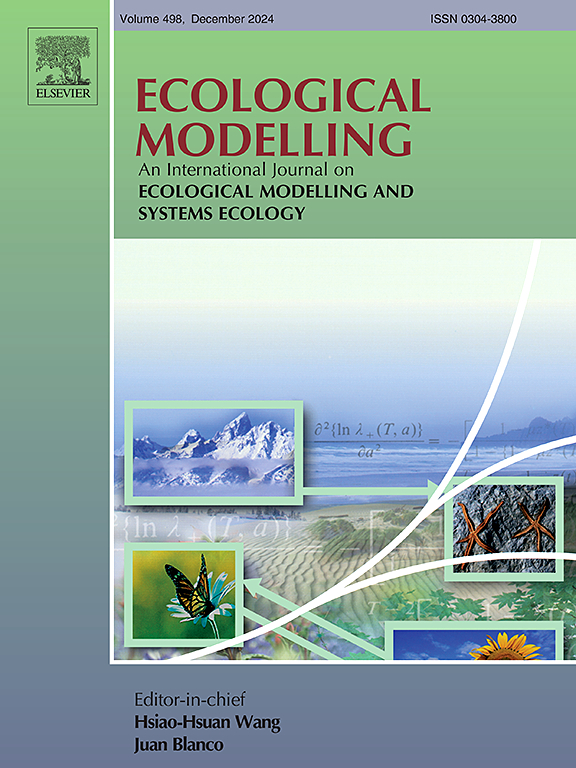How are diameter growth, forest structure and carrying capacity related in tree populations?
IF 2.6
3区 环境科学与生态学
Q2 ECOLOGY
引用次数: 0
Abstract
This study modeled the diameter growth of Araucaria angustifolia, Cedrela fissilis, and Ocotea porosa as a function of age and analyzed how these factors are related to diameter distribution. This analysis was used to describe behavior in terms of age and lifespan, and also determined periods of technical growth stagnation for each species. Diameter growth was evaluated via partial trunk analysis using increment cores from 30 trees per species in six study locations in southern Brazil (totaling 480 cores), collected in proportion to diameter distribution. Twelve biological models were utilized to estimate diameter growth as a function of age of the species in the different locations. The Weibull probabilistic density function with three parameters was adjusted to represent the diametric structure and indicate carrying capacity. Distinct ages were identified in the different study locations, indicating successions in separate periods during the past as well as locations with the least alterations (oldest successions). The diameters at the technical age of stagnation and carrying capacity were found to be generally similar, demonstrating the relationship between diameter structure and diameter increment. Maximum vigor in the three species was found to occur at diameters considerably smaller than the maximum value, suggesting that attainment of significant ages and diameters may not fully reflect the inherent potential of all individuals within the species under study. The maximum diameter increment vigor in the species under analysis was observed during the early stages of development, and tended to diminish in the subsequent phases.
求助全文
约1分钟内获得全文
求助全文
来源期刊

Ecological Modelling
环境科学-生态学
CiteScore
5.60
自引率
6.50%
发文量
259
审稿时长
69 days
期刊介绍:
The journal is concerned with the use of mathematical models and systems analysis for the description of ecological processes and for the sustainable management of resources. Human activity and well-being are dependent on and integrated with the functioning of ecosystems and the services they provide. We aim to understand these basic ecosystem functions using mathematical and conceptual modelling, systems analysis, thermodynamics, computer simulations, and ecological theory. This leads to a preference for process-based models embedded in theory with explicit causative agents as opposed to strictly statistical or correlative descriptions. These modelling methods can be applied to a wide spectrum of issues ranging from basic ecology to human ecology to socio-ecological systems. The journal welcomes research articles, short communications, review articles, letters to the editor, book reviews, and other communications. The journal also supports the activities of the [International Society of Ecological Modelling (ISEM)](http://www.isemna.org/).
 求助内容:
求助内容: 应助结果提醒方式:
应助结果提醒方式:


